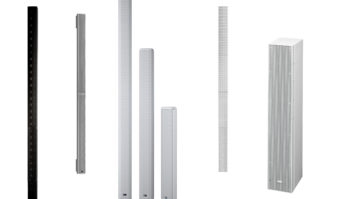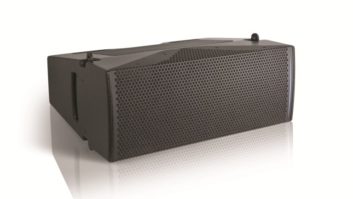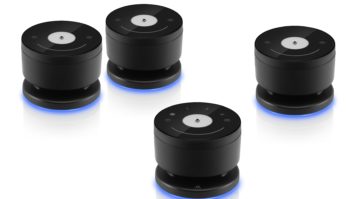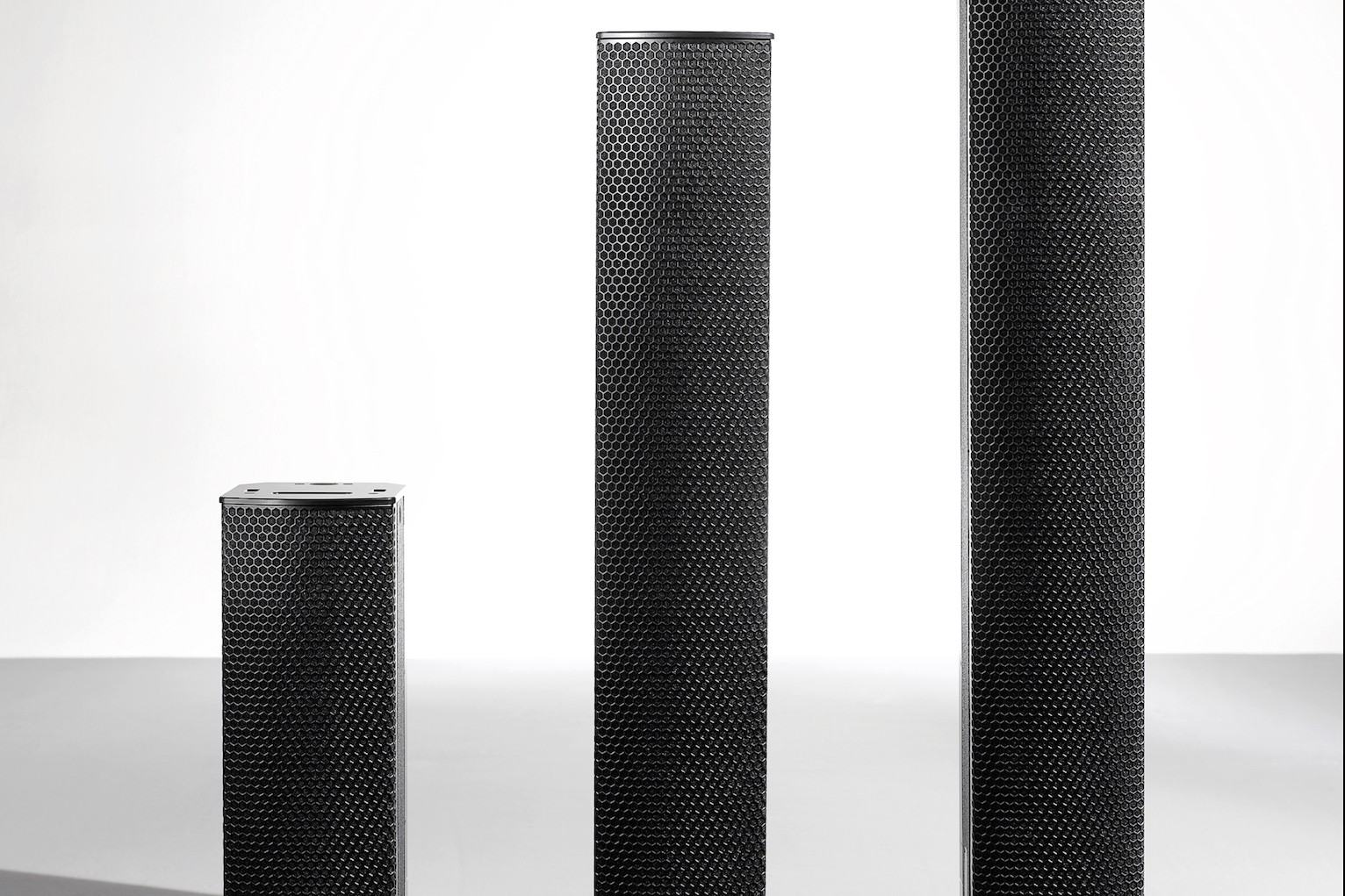
A number of manufacturers are increasing the level of control over beam steering and splitting as well as increasing SPL output to target larger venues.
Fohhn offers incremental beam steering
Fohhn’s Focus Modular loudspeaker systems bring the company’s beam-steering technology to larger rooms and venues. The series includes two high-frequency models, FM/I-100 and FM/I-110, as well as a low-mid model, FM/I-400.
An advantage of these systems is the vertical sound inclination angle and beam width can be adjusted in 0.1° increments using a single Fohhn software program, which means they do not require built-in presets.
The FM range includes 1in compression drivers, waveguide and horn as well as an algorithm to suppress unwanted side lobes.
One FM/1-100 can produce a maximum SPL of 148dB at 1m distance and 108dB at 100m. The largest model weighs just 41kg, demonstrating the high level of performance for its size.
Focus Modular systems also offer installation flexibility both indoors and outdoors, and can be mounted flat against a wall or integrated into the wall itself. Their unobtrusive design and choice of RAL colours also allows them to blend with a variety of interiors.
Kling & Freitag delivers real-time monitoring
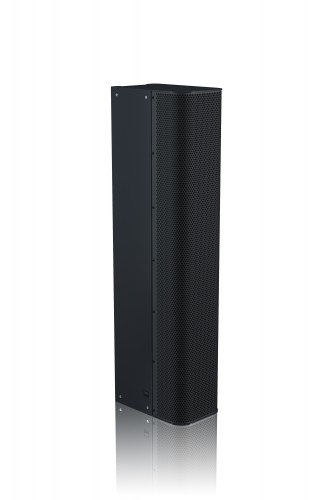
Kling & Freitag’s VIDA steerable system can be used for both speech and musical performances due to its coaxial three-way structure. The system also has a lower cut-off frequency of 57Hz with one module capable of over 134dB SPL.
To provide up to 20dB of rear attenuation in the low to mid frequency range, VIDA utilises a combination of VIDA C and VIDA L, which makes it easier to use with headsets or lavalier microphones.
As well as each module including a built-in Dante card, the system also has an optional cardioid module.
The system can be expanded up to 8.90m long and both electrically and mechanically inclined. In addition, the arrays are monitored in real time through an in-built inclinometer in the software, and a native app allows the system to be monitored via a tablet or laptop.
The beams can be adjusted in steps of 0.1° for different listener zones, and electrical adjustment via tablet offers greater flexibility and saves time when responding to changing sound scenarios.
Meyer Sound brings HF steering and splitting
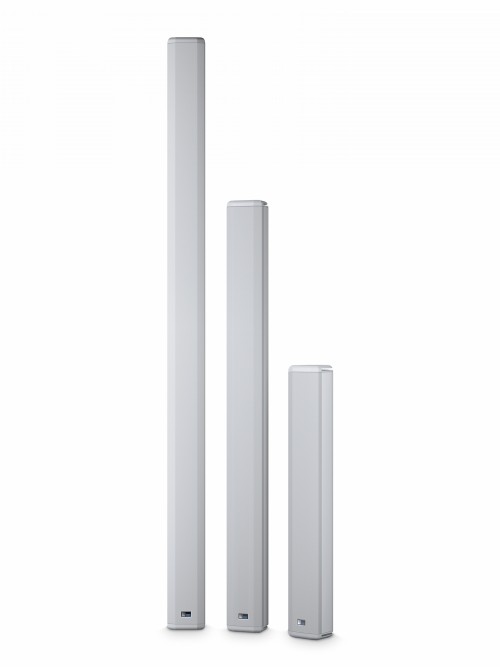
The CAL product line consists of CAL 32, CAL 64, and CAL 96 models with between 32 and 96 4in cone drivers and 0.75in dome tweeters, with each driver having its own channel of DSP and amplification. The HF drivers enable effective beam steering up to 10kHz, and the CAL 96 produces 106dB output at a distance of up to 90m.
The dedicated DSP output and amp channels help create uniform beams of sound with minimal grating lobe effects, even at extreme steering angles.
In addition to the extended high-frequency beam steering and beam splitting, CAL systems also include greater coverage control and higher levels of accuracy and directionality.
Each model is capable of between 5° and 30° beam width adjustment in 5° steps, and the beam can also be steered vertically in 1° stages to ±30°. The CAL 64 and CAL 96 models offer beam splitting, with upper and lower beams individually adjustable for both vertical coverage and off-axis angle.
JBL offers long-throw capability
The Intellivox-DSX500 is the flagship loudspeaker array of JBL’s slimline Intellivox DSX range. Its 4m acoustic length offers long-throw capability as well as greater control at lower frequencies.
A single DSX500 model can cover an area of up to 70m while maintaining even SPL, which makes it suited to applications including transport hubs, houses of worship, lecture halls, and any other highly reverberant and architecturally sensitive environments.
The DSX500 features 28 custom-designed 4in loudspeakers, arranged in accordance with a patented algorithm. The eight 1in dome tweeters, driven by a 16-channel Class D amplifier, are designed to improve horizontal coverage at high frequencies.
Additionally, to broaden its possible uses, JBL has also implemented an extensive set of surveillance functions to meet the demands of voice alarm applications.
The unit can be controlled using JBL’s WinControl software, which offers control of the beam-steering parameters, audio processing, and surveillance features.
Renkus-Heinz combines high output with slim design
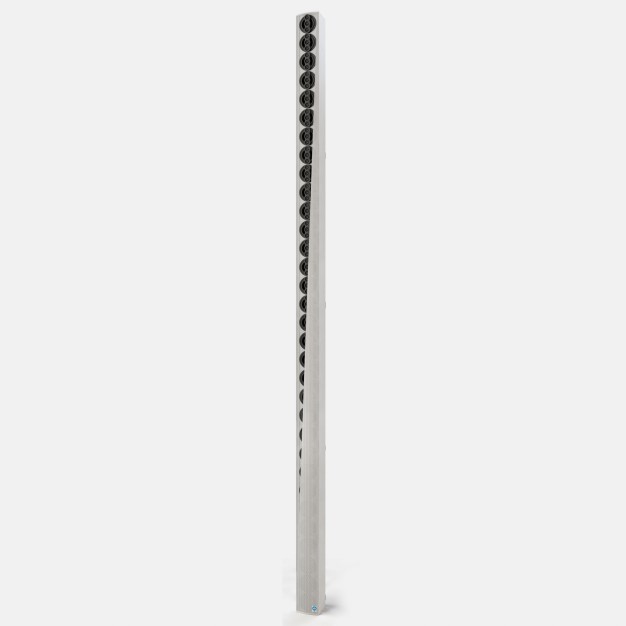
The IC32-RD and IC32-RN are the most powerful models in the Iconyx Gen5 range from Renkus-Heinz, covering up to 80m in a slim, low-profile design.
The digitally steerable line array loudspeaker systems have advanced beam steering technology effective down to 200Hz as well as multiple beams and acoustic beam centres.
The Iconyx technology provides sound system designers with the tools to create a system that can function in the most acoustically demanding spaces. Up to 16 steerable beams can be individually shaped and aimed from a single IC32 column using the software-controlled DSP.
Multichannel amplifiers power arrays of 32 4in coaxial transducers, each with a triple-tweeter high-frequency array to create an ‘array within an array’. This is designed to reduce the distance between high-frequency sources for improved high-frequency performance with consistent, broad horizontal dispersion.
Additional features include dual-redundant Dante connectivity and multiple configuration presets.
Wide horizontal coverage from K-array
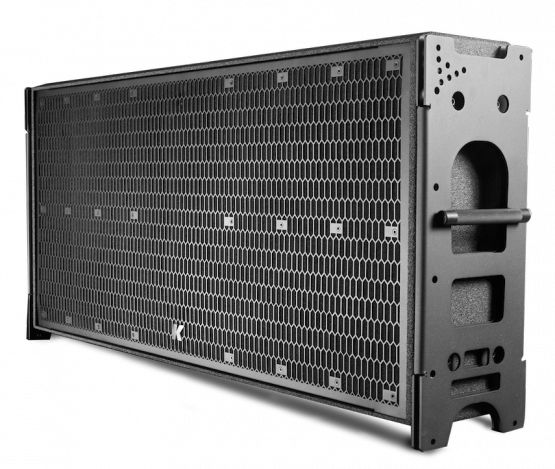
The KH5 self-powered line array element, part of K-array’s Concert Series speaker range, has digital acoustic steering for wide horizontal coverage and is able to produce up to 139dB.
Research to develop the next-generation Firenze Series touring systems has been applied to the Concert Series and resulted in a number of advances including integrated DSP with multiple analogue and digital inputs as well as an onboard touchscreen with matrix control.
In addition, the KH5 also features K-array’s signature ‘Slim Array Technology’ design, and includes capabilities to allow stacking and hanging in a number of positions.
The KH5 has two 15in neodymium woofers with a 3in voice coil and four 1.4in compression drivers. Despite the size of the large format speaker, it maintains a strong performance to size ratio, making it highly suitable for houses of worship, theatres and stadiums.


